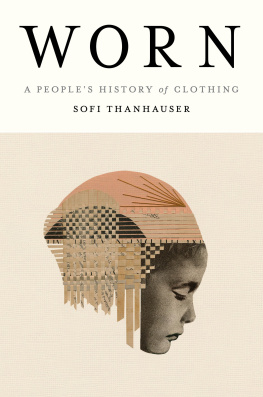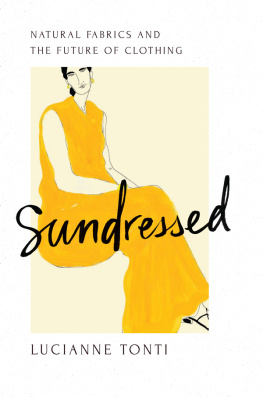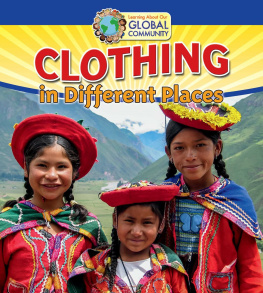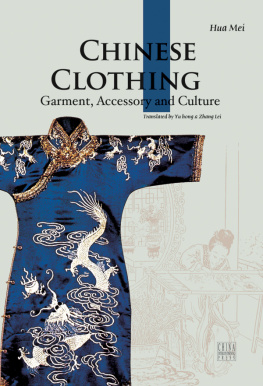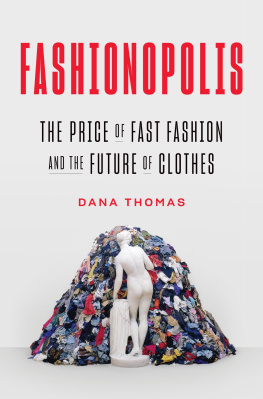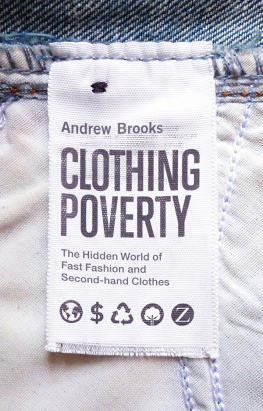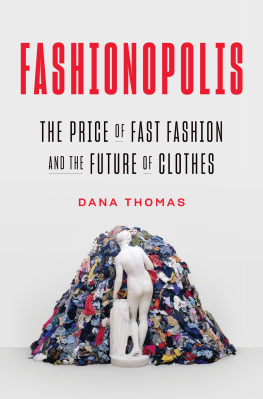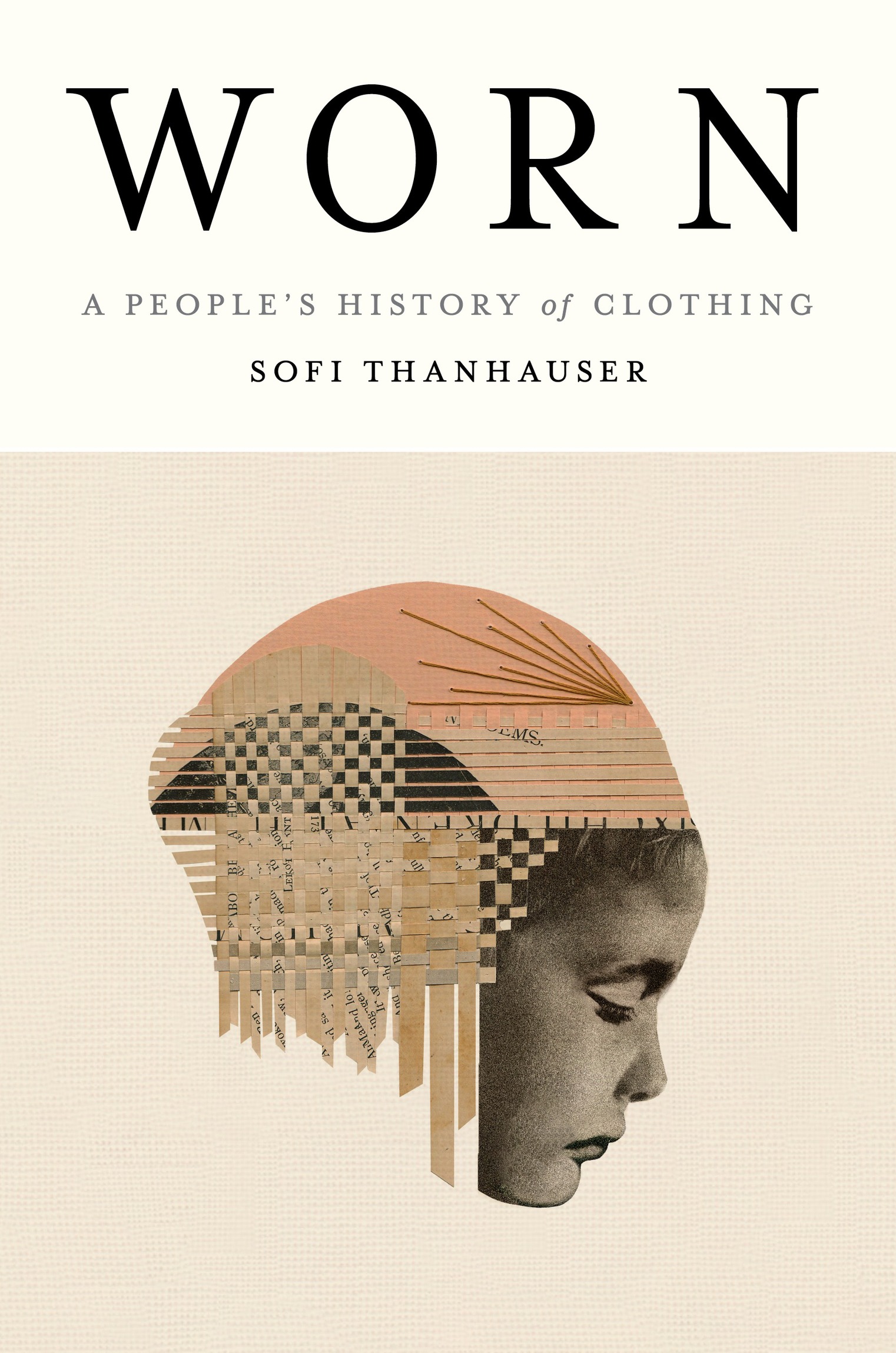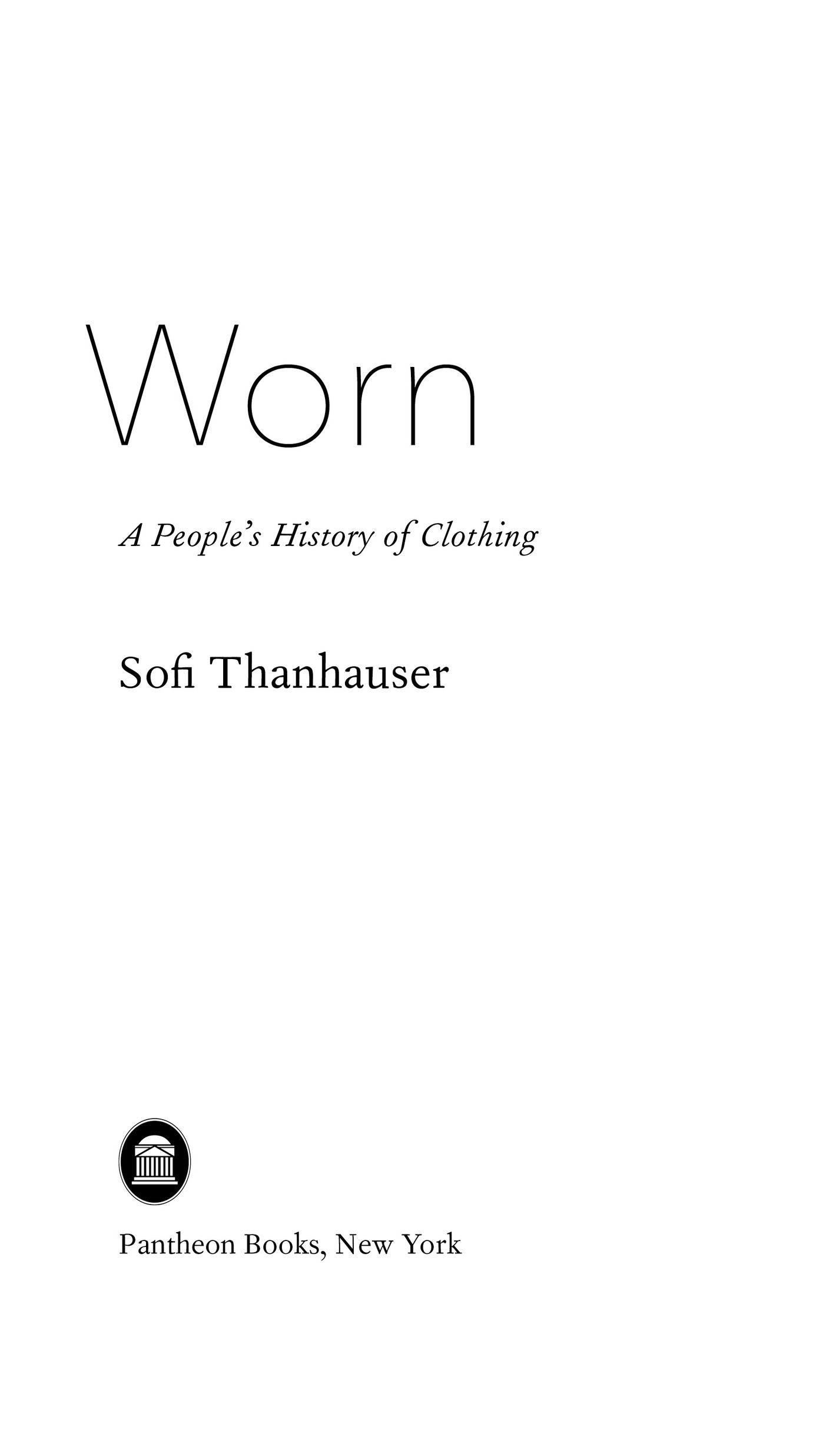All rights reserved. Published in the United States by Pantheon Books, a division of Penguin Random House LLC, New York, and distributed in Canada by Penguin Random House Canada Limited, Toronto.
Pantheon Books and colophon are registered trademarks of Penguin Random House LLC.
Name: Thanhauser, Sofi, author.
Title: Worn : a peoples history of clothing / Sofi Thanhauser.
Description: First Edition. New York : Pantheon Books, 2022. Includes bibliographical references and index.
Identifiers: LCCN 2021014453 (print). LCCN 2021014454 (ebook). ISBN 9781524748395 (hardcover). ISBN 9781524748401 (ebook).
Subjects: LCSH: Clothing and dressHistory. Clothing and dressSocial aspects. FashionHistory. FashionSocial aspects. Textile fabricsHistory.
Classification: LCC GT511 .T53 2022 (print) | LCC GT511 (ebook) | DDC 391.009dc23
Introduction
I like clothes.
Not far from the house in which I grew up on the island of Marthas Vineyard is a place that we locals call the Dumptique. There are too many New York Times Travel Section pieces devoted to giving away islander secrets for me to describe its exact location here in good conscience, but imagine it in a low-lying field edged with gnarled, wind-stunted oaks: a small uninsulated shack set a few hundred yards out from the municipal landfill. The Dumptique is stuffed to its corrugated metal roof with pots, pans, books, old lamps, worn-out puzzles, and several bins of used clothing.
Everything at the Dumptique is free, and every year wealthy summer residents of Marthas Vineyard leave behind extraordinary garments that end up buried among unwanted craft kits, waiting to be discovered by a sharp eye. I went to the Dumptique every Saturday of my adolescence to scavenge, and in this way garments I would never otherwise have touched, let alone owned, came into my possession. To wit: A loden coat. A Barbour jacket. A pink silk cocktail dress from the 1950s with a cream-colored taffeta lining. A green Marimekko Design Research dress from the 1970s. Swiss-made camisoles with delicate scalloped edges. Camel hair shirts. Arche boots. Slowly, ineluctably, these treasures drained any possible enthusiasm I could have felt for the clothes in the Falmouth TJMaxx, which was the other place I shopped at that time. I became, irrevocably, a clothing snob.
In the Dumptique I began to notice that the older clothes were almost invariably better and more durably made than the newer ones. I noticed the same thing when I watched old films. Lauren Bacalls tailored suits, Anna Karinas perfect jersey tops, even in celluloid, retained markers of an integrity and formal thoughtfulness that was totally absent in, say, one of Jennifer Anistons limp rayon blouses.
The record on film and in the Dumptique could not take me back much further than the early twentieth century. But about three miles west of the Dumptique stands a house built around 1740, beside a brook dammed by a Puritan patriarch who made his name as a general in King Philips War. Like many colonial-era American homes, the house was designed with no closets. Rather, a single hook or a peg rail sufficed. This was testament to a time when each member of the family owned two sets of clothing: one for Sunday, and one for every other day of the week. These clothes must have been durable indeed.
It seemed to me that the quality and durability of American clothing had seen a steady decline and fall. My mothers reminiscences about her past were further testimony. My mother grew up in Sheffield, Massachusetts, in the 1950s and 1960s. When she was in high school, a common joke was what does she, make her own clothes? to refer to a nerdy or unpopular girl. This was really, my mother recalls, a coded way of saying that the girl was poor. What this points to (beyond the barbarity of American high schoolers) is that in the 1960s it was still cheaper to make your own clothes than to buy them in a store. And no wonder: garment manufacture was union work at which highly skilled workers labored and earned a living wage and health benefits. At the time, the International Ladies Garment Workers Union was one of the largest unions in the U.S.
Today, it is no longer cheaper to make your own clothes than to buy them. A task that once fell within the province of the ordinary household is now an esoteric hobby, requiring skills out of reach to most ordinary Americans. It can even be cost prohibitive, since to buy the cloth to make a shirt will often cost more than the price of a new shirt. A curious reversal.
Ralph Tharpe, the former design engineer at Cone Mills in North Carolina, and the man responsible for making denim for Levis 501s during the 1970s, put the question to me this way: Why is it that from 1960 to today the price of a Ford truck has increased ten times over and the price of a pair of dungarees has stayed the same? This question becomes even more puzzling when one considers that many mass-manufacturing processes have been automated since the 1960s but sewing is not one of them. The process one follows to sew a garment has not changed materially since the advent of the sewing machine. Fabric is a fussy and unpredictable material, unlike sheet metal, that still requires the subtle manipulation of tension that can only be done by a real human hand.
How then, did this happen?
If it were possible to travel back in time five hundred years, we would be dazzled by the beauty and diversity of the clothing that people made and wore. We would see huipil woven of handspun cotton dyed with cochineal, silk kimono, shibori dyed using indigo, Hezhe dresses made of salmon skin, Kuba textiles woven from palm leaf fiber, embroidered with complex geometric patterns and stained red with dye from the heartwood of a tropical tree, and Russian peasant shifts made from linen, embroidered with threads dyed a deep mauve using local lichen. We would see the flora and fauna of thousands of micro-environments transformed into cloth: like the scratchy wool of the Herdwick sheep, which thrive on the rocky terrain of the Cumbrian fells of northern England, perfect for the local tweed. The colors of the clothes were drawn from lichen, shells, bark, indigo, saffron, roots, beetles. The fabric constructions and patterns themselves were astonishing, containing special regional weaves and knits, number magic, protective prayers, and clan symbols, collectively honed motifs, and individual flourishes. This localism coexisted with trade. And a type of small-scale textile manufacturing thrived among every group of agriculturalists across the world.
In our present world, whether we traveled to England or Russia, China or Mexico, Kenya or Uruguay, we would see T-shirts, jeans, jackets, and skirts made predominantly of two materials: cotton and petroleum. At the same time, the system of production responsible for making all these clothes has everywhere become more extractive, centralized, and concentrated among a few megacorporations. In 2019, global retail sales of apparel and footwear reached 1.9 trillion U.S. dollars. Thats more than double that years global sales of consumer electronics and four times global arms sales. Meanwhile, Nikes market capitalization is more than four times that of the Ford Motor Company. And what had once been the worlds most common and widely distributed popular artmaking textileshas almost disappeared from the hands of the artisan.

